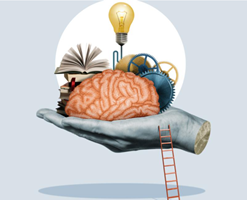

25th May 2023 (8 Topics)
Context
Recently, the U.S. Supreme Court's decision in Andy Warhol versus Goldsmith et al. has added uncertainty to the process of exempting from copyright infringement liabilities, which could have implications for artificial intelligence regulation.
Key Highlights:
- Rights for Artists: Copyright law protects the work of diverse artists and provides exclusive rights for artists.
- However, these rights are balanced with the rights of users of the work, such as other artists.
- Different jurisdictions follow different approaches to exceptions, with the U.S. following an open-ended approach and India following a hybrid model.

To what extent does copyright law protect artists?
- Copyright law protects the work of artists, including photographers, and provides exclusive rights over their creative output.
- However, these rights are balanced with the rights of users, such as other artists, through various exceptions.
What is exempt from infringement liability?
- The U.S. courts primarily consider four factors when determining whether a particular use can be considered to be an instance of fair use: the purpose and character of the use, the nature of the copyrighted work, the amount and substantiality of the portion taken by the defendant, and the effect of the use on the potential market of the plaintiff’s work.
- This open-ended approach provides S. copyright law with flexibility and strength, but has a major limitation: it is hard to predict ex ante whether an activity will be exempted from liabilities.
|
What is the AWF case?
|
How does this affect generative AI?
- The court's ruling could have implications for generative AI tools, such as ChatGPT4, MidJourney, and Stable Diffusion, which use text, photos, and videos strewn around the internet.
- The majority's reliance on the commercial nature of the use may result in deviation from the established view of fair use.
What about the implications on Indian copyright law?
- The U.S. Supreme Court's decision could have a persuasive effect on Indian copyright law, as it exempts fair dealing with copyrighted work for specific purposes.
- India also has a long list of enumerated exceptions, but only time will tell which one will be more persuasive.
More Articles


